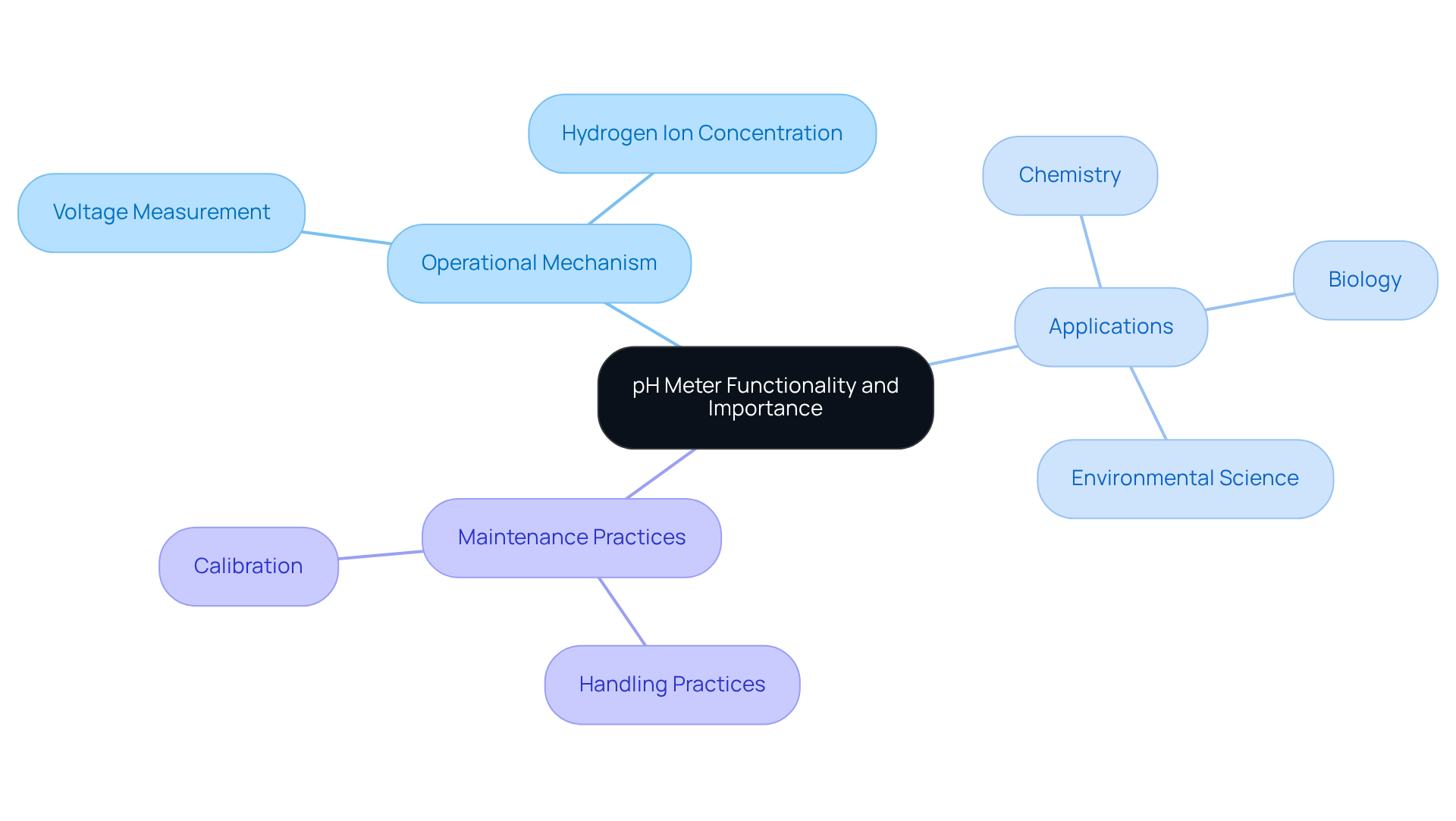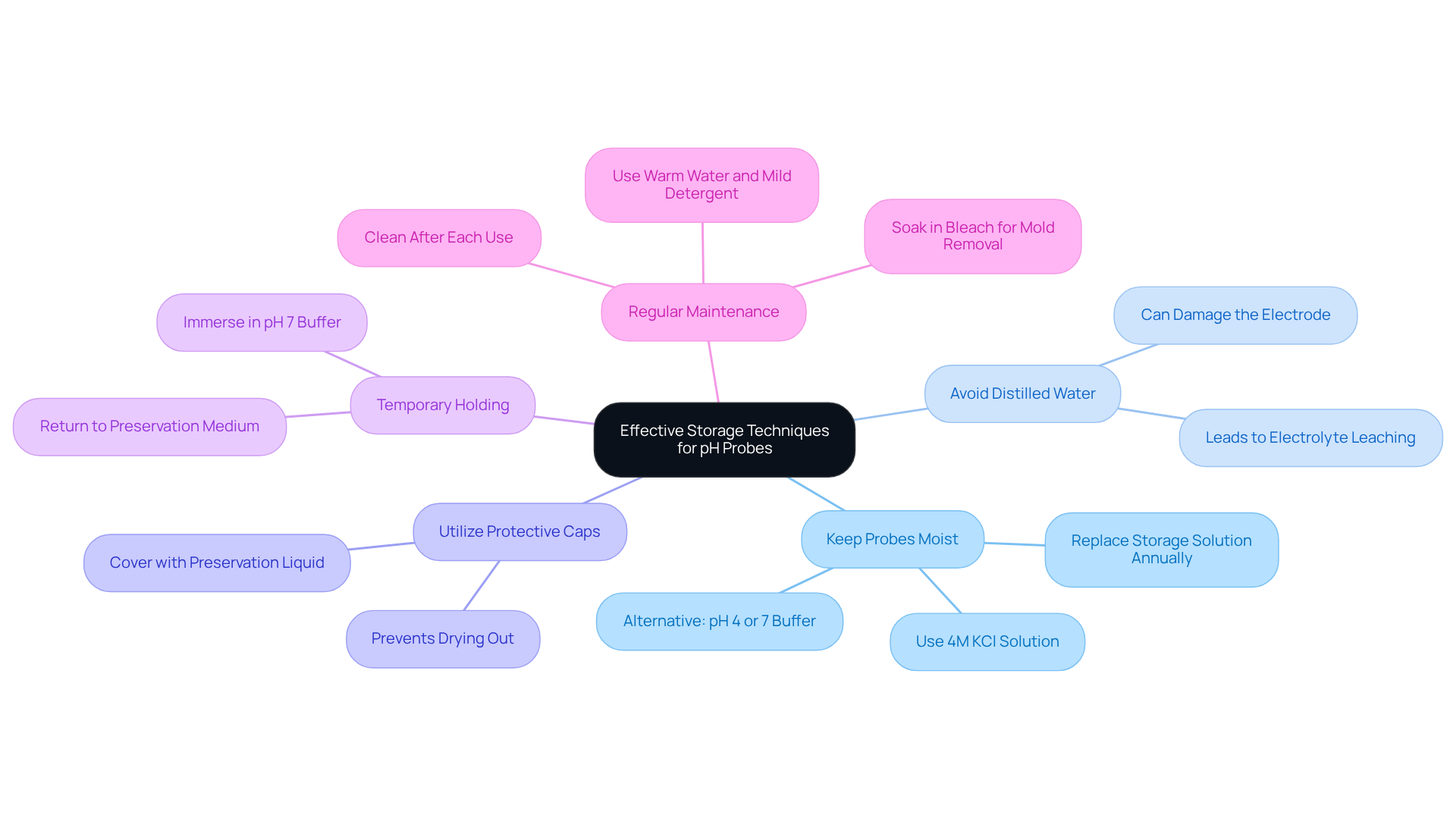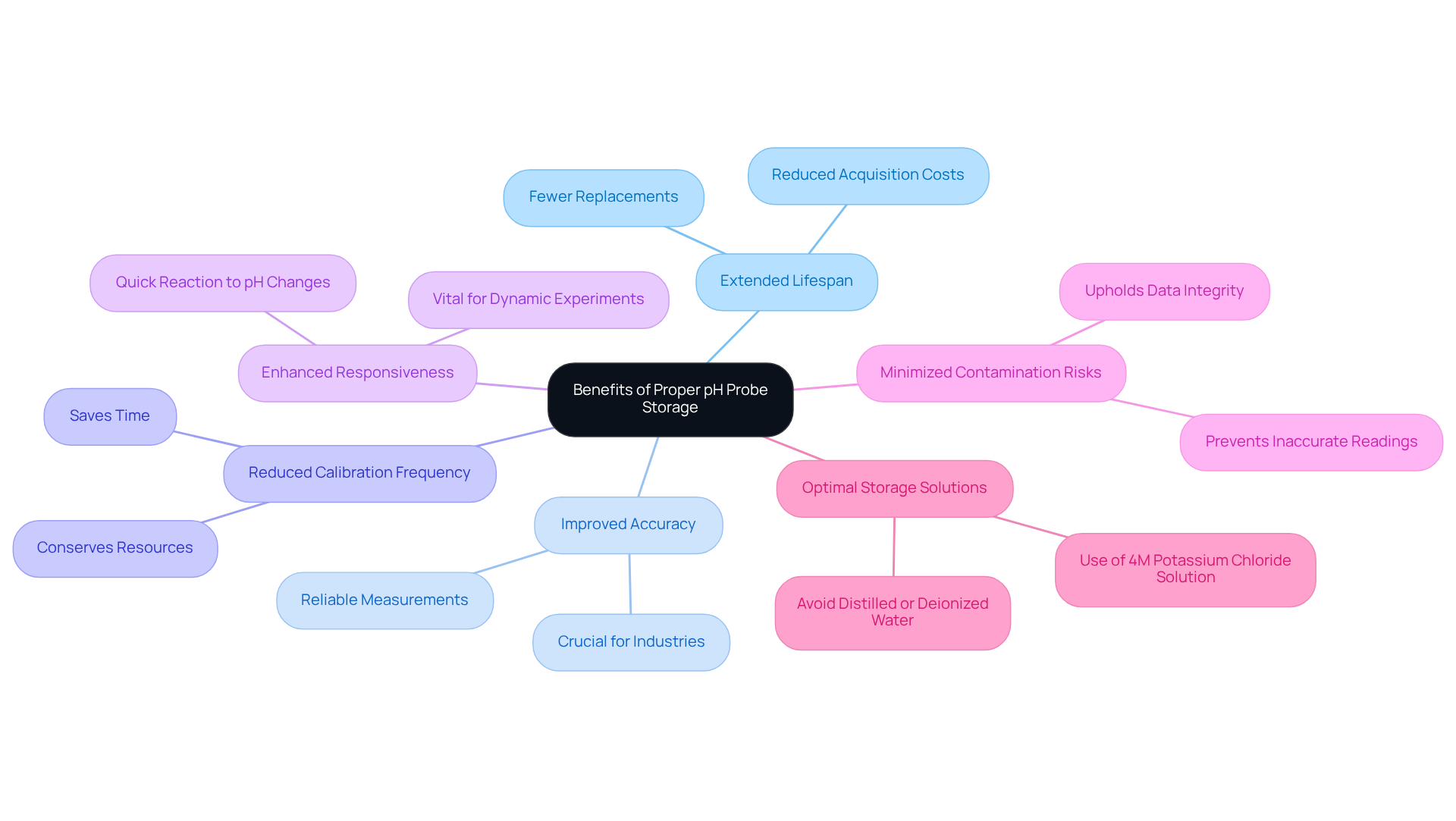Overview
The article underscores the critical nature of proper storage techniques for pH meter probes, which is essential for ensuring their optimal accuracy and longevity. By maintaining probes in suitable preserving solutions and avoiding distilled water, laboratories can significantly enhance the lifespan and measurement reliability of these instruments.
Regular maintenance practices are also highlighted as vital components that contribute to improved laboratory efficiency and reduced costs. Ultimately, these practices not only safeguard the integrity of the probes but also foster a more reliable and cost-effective laboratory environment.
Introduction
Understanding the intricate balance of acidity and alkalinity is crucial across various scientific disciplines, making pH meters indispensable tools in laboratories globally. The longevity and accuracy of these instruments significantly depend on their storage and maintenance.
What are the implications of simple storage mistakes that can lead to costly errors and unreliable results? This article explores best practices for pH meter probe storage, demonstrating how proper techniques can enhance performance and extend the lifespan of these essential instruments.
Understand pH Meter Functionality and Importance
pH meters are indispensable instruments for evaluating the acidity or alkalinity of liquids, providing crucial insights for a variety of applications in chemistry, biology, and environmental science. These devices operate by measuring the voltage difference between two probes, one of which is the pH meter probe, immersed in the solution, which corresponds to the hydrogen ion concentration, thereby determining the pH level. A comprehensive understanding of this functionality is essential for laboratory personnel, as it significantly influences the accuracy of experimental outcomes.
Regular calibration and maintenance of pH meters are critical to ensure reliable readings. Consequently, implementing proper handling practices is vital to prevent electrode degradation and to maintain their effectiveness over time.

Implement Effective Storage Techniques for pH Probes
To ensure optimal performance and longevity of the pH meter probe, implementing effective preservation techniques is essential. The following key practices are vital:
-
Keep Probes Moist: Always maintain pH probes in an appropriate preserving liquid, such as a 4M potassium chloride (KCl) mixture, to ensure the glass bulb remains hydrated. If KCl is unavailable, a pH 4 or 7 buffer solution can serve as an alternative. The usual life of a pH sensor ranges from 6 months to 2 years, making proper storage crucial for maximizing its lifespan.
-
Avoid Distilled Water: Keeping pH sensors in distilled or deionized water is detrimental, as it can lead to the leaching of the reference electrolyte, ultimately harming the device. This common error can significantly reduce the lifespan of the sensor.
-
Utilize Protective Caps: When not in use, cover the pH sensor with a protective cap containing the suitable preservation liquid to prevent drying out. This simple measure can significantly extend the lifespan of the electrode.
-
Temporary Holding: For brief intervals between applications, immersing the sensor in a pH 7 buffer or clean water is permissible, but it should be returned to an appropriate preservation medium afterward to maintain hydration.
-
Regular Maintenance: Clean the sensor after each use to ensure it is free from contaminants before storage. For effective cleaning, rinse the tip with warm water and mild dishwashing detergent, or use a dilute bleach solution for mold removal. This practice aids in preserving the instrument's sensitivity and precision, ensuring dependable measurements across diverse applications.
By adhering to these preservation methods, laboratories can enhance the lifespan and functionality of their pH meter probe, ultimately resulting in more precise and reliable outcomes. Following these practices not only improves measurement precision but also reduces expenses related to replacing pH sensors.

Recognize the Benefits of Proper pH Probe Storage
Proper storage of the pH meter probe presents numerous advantages that significantly enhance laboratory efficiency and accuracy.
-
Extended Lifespan: Maintaining instruments in optimal conditions can greatly prolong their lifespan. This results in fewer replacements and reduced expenses related to acquisition.
-
Improved Accuracy: Well-maintained pH meter probes yield more reliable and precise measurements, which are essential for experiments requiring exact pH readings. Studies indicate that consistent maintenance can lead to a marked improvement in measurement accuracy, crucial for industries such as pharmaceuticals and food production.
-
Reduced Calibration Frequency: Properly stored sensors necessitate less frequent calibration, conserving both time and resources in laboratory settings. This efficiency enables scientists to concentrate on critical tasks rather than routine maintenance.
-
Enhanced Responsiveness: Keeping probes hydrated ensures they react swiftly to pH changes, vital for dynamic experiments where rapid adjustments are necessary.
-
Minimized Contamination Risks: Implementing appropriate preservation methods significantly reduces the likelihood of contamination, which can jeopardize experimental outcomes and lead to inaccurate readings. By preventing contamination, laboratories can uphold the integrity of their data, ultimately enhancing overall research quality.
-
Optimal Storage Solutions: It is essential to store pH electrodes in suitable solutions, such as 4M Potassium Chloride Solution, to prevent ion depletion. Storing instruments in distilled or deionized water can render them ineffective due to ion leaching, underscoring the importance of utilizing the correct medium for preservation.
Incorporating these best practices not only optimizes the performance of the pH meter probe but also leads to substantial cost savings and improved laboratory outcomes. Additionally, common pitfalls, such as neglecting to remove the protective cap before use and ensuring the electrode remains moist during long-term storage, should be avoided to maximize the effectiveness of these practices.

Conclusion
Ensuring the accuracy and longevity of pH meter probes is paramount for achieving reliable scientific results. Proper storage techniques profoundly influence the performance of these instruments, underscoring the necessity for meticulous preservation. By adopting best practices, laboratories can significantly enhance the functionality of their pH meters, leading to more precise measurements and improved research outcomes.
Key insights emphasize the critical importance of maintaining moisture in probes using appropriate solutions, steering clear of distilled water, and employing protective caps during storage. Regular maintenance and thorough cleaning are also essential for preserving the sensitivity of the probes. These practices not only extend the lifespan of the sensors but also enhance measurement accuracy, reduce calibration frequency, and mitigate contamination risks.
In summary, dedicating time to proper pH probe storage is a vital step toward achieving optimal laboratory efficiency and accuracy. By following these best practices, researchers can ensure their pH meters yield reliable results, thereby supporting the integrity of their scientific endeavors. Highlighting the significance of effective storage methods promotes a culture of meticulous care for laboratory instruments, ultimately benefiting various industries that depend on precise pH measurements.




